
Make talent quality your leading analytic with skills-based hiring solution.

Companies have embarked on the journey to embrace digitization. Years ago, remote working and remote hiring were considered far-fetched, but now, it has become full-time. We may give this credit to COVID-19 but digital transformation had begun long before the world went into a pit of darkness.
As per Global Workplace analytics, remote working has increased by 159% in the last 12 years.
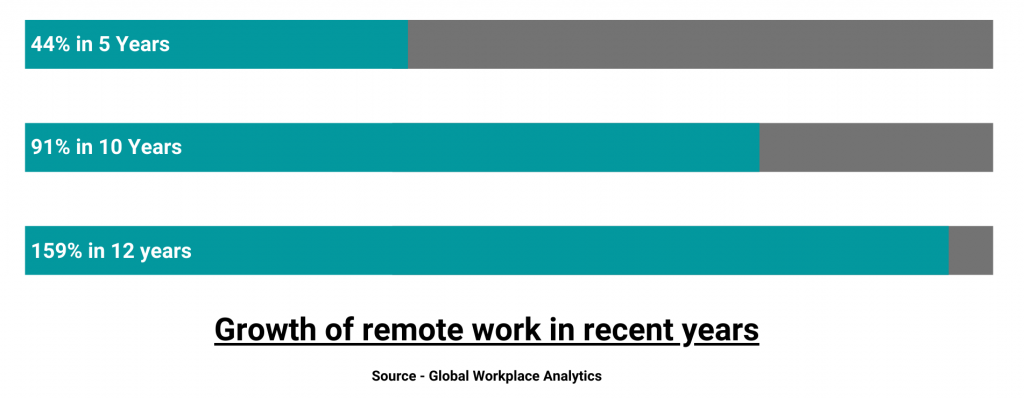
Remote working has increased significantly over the years. What may be the reason you ask? Why are companies hiring remote workers? Does remote hiring need a complete mindshift?
According to Can Onen, by 2040, the hiring and onboarding landscape will consist a comprehensively digitized workforce and and extremely tech-savvy talent pool. Well, let’s point out the problems with the traditional or non-remote way of working.
In this blog, we shall cover the following:
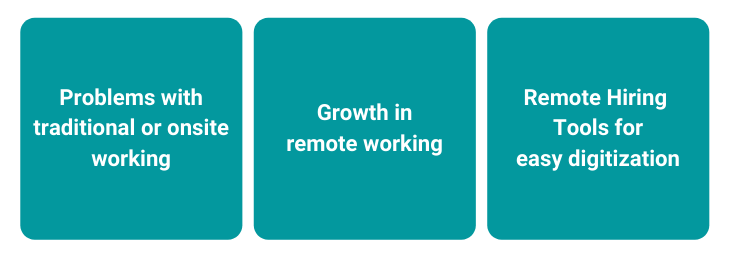
Traditional working poses a lot of problems or rather challenges. Following are the problems associated with traditional or non-remote working:
Having a lavish office for working may sound great. But everything comes with a price. From electricity bills to refreshment expenses, from stationery to staff expenses, onsite jobs ask for a great deal of investment.
Working after hours may have become normal but employers exploit that privilege at certain moments. Violating an employee’s personal time means violating his rights.
When someone is dedicating his time at work, the least an employer can do is give him his personal time. This is one of the major setbacks of onsite working.
Exhaustion lead to inefficiency. Onsite working puts a lot of pressure on the employees making them vulnerable to mistakes.
Sure, the lead can monitor the teams better in onsite working but, tracking efficiency throughout is not possible. Sometimes, lack of remote work minimizes the energy of the employees, resulting in less efficiency.
What does digitization of hiring process look like? Here are the main reasons behind the growth of remote working.
For recruiters and HRs, remote hiring has become the reality and it is here to stay. Even universities have started virtual campus recruitments to replace the hassles of on-campus recruitments.
The transformation sure is challenging and there are plenty of obstacles. But with the right set of remote hiring tools, you are guaranteed to get the top talent.
Make sure to check out the latest trends in HR technology that would frame the hiring strategy for 2021.
As a recruiter, you should get hold of these 5 remote hiring strategy tools to create better recruitment opportunities for your company. These remote hiring tools are:
A candidate may look good on paper, but there is no guarantee. Around 52% of recruiters say that screening is the hardest part of hiring.
An effective phone screen interview is the best alternative for pointless CV screenings. The purpose of phone screening is to weed out those candidates who won’t be fit for the company. You get a good knowledge about the candidates and make sure to qualify only those who seem right.
The key is to avoid asking too many technical questions and only get an idea about the personality of the candidate.
Glider guides you to smoothly process the phone screening round. The platform improves and standardizes the interaction from the go. It provides you with step-by-step questions to ask during the screening round.
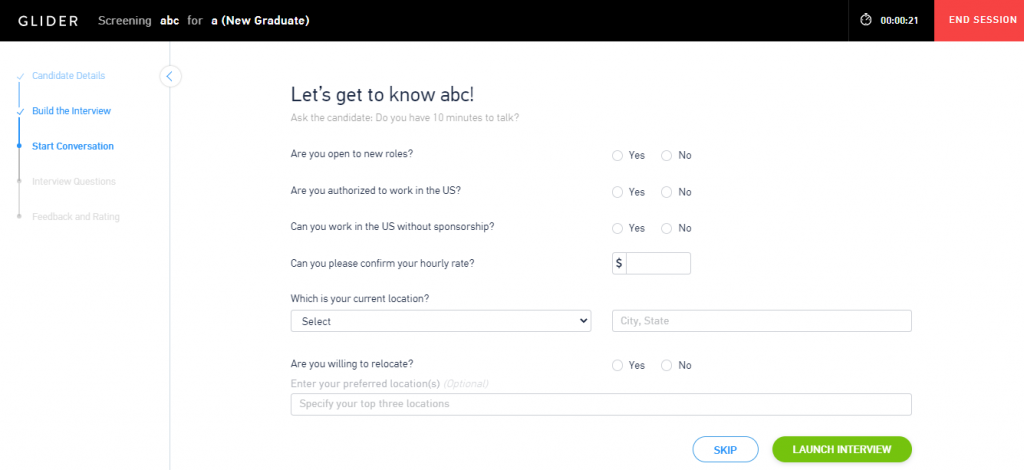
Additionally, candidate skill reports get auto-generated based on the interview that can be sent directly to the managers. The software integrates with the existing ATS of the company or provides an ATS that helps you to vet the candidates necessary for the background check.
One-way video interviews are technology-enabled interview modes where the candidates record their answers to your preset questions. These are some of the most in-demand remote hiring tools available in the market. Adding these during the screening process helps you to deliver a more effective process
Glider provides asynchronous video interviews that relieve you of all the hassles and make the process fast-paced and cost-effective.
You can provide a better interview experience to your candidates and take unbiased decisions with our pre-recorded video interviews. Our one-way video interviews are equipped with all the features you need to find the best fit for your company.
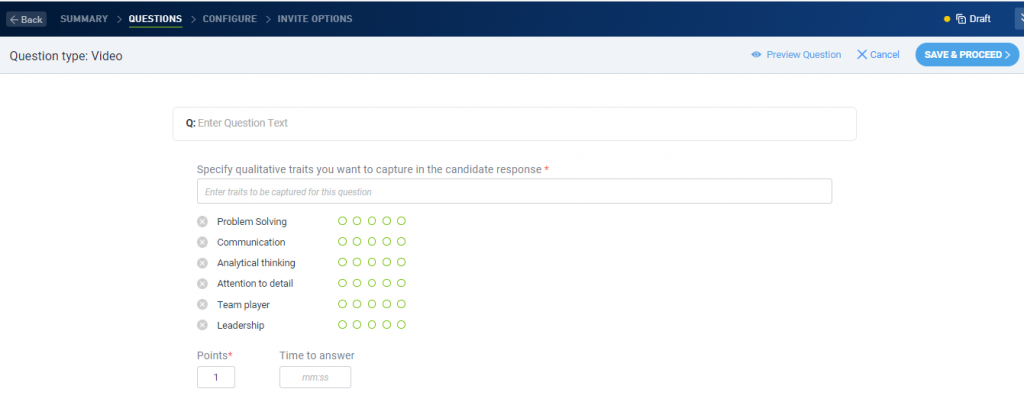
Coding tests are the most important remote hiring tools for online technical assessment. These tests help to examine the technical prowess of the candidates, making the selection process better.
These tests help in predicting the candidate’s skill-set, future job performance, and problem-solving skills.
Glider helps you create auto-evaluated coding tests that are of acceptable duration (45-60 minutes). You can use pre-built tests or create your coding tests with 30+ question types including video assessments.
Our platform also lets you evaluate the programming skills of candidates with over 40 programming languages. You can code collaboratively with the candidate during the tests.
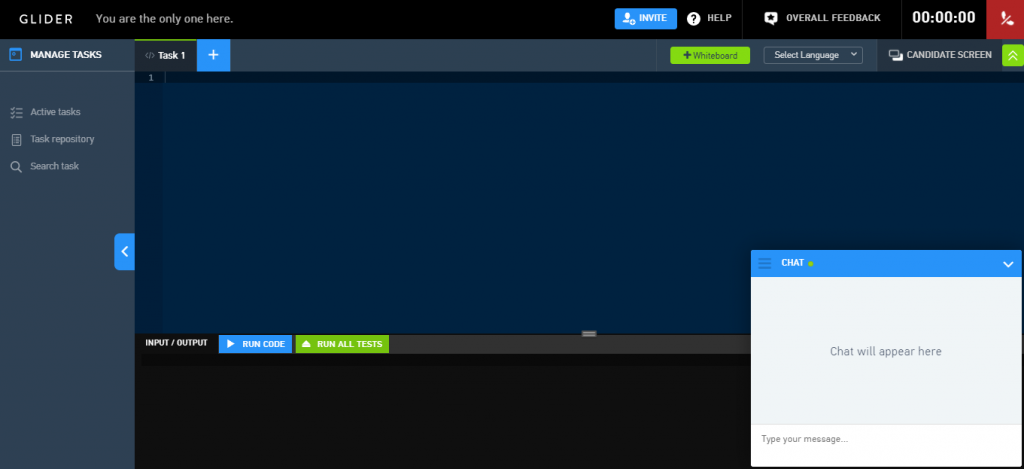
Coding simulations evaluate the candidates’ situation awareness. These simulations are used to give the candidates a picture of the real-world problems, so they can self-assess themselves.
Glider helps you analyze a candidate’s skill level, personality traits, skills, and cultural fitment with the help of holistic interactive assessments, real-world simulations, and general programming. You can evaluate the candidates on the problems that they will be doing when they join your organization.
With Glider, you can simulate a vast range of tech stacks from data science to DevOps and from backend development to frontend development.
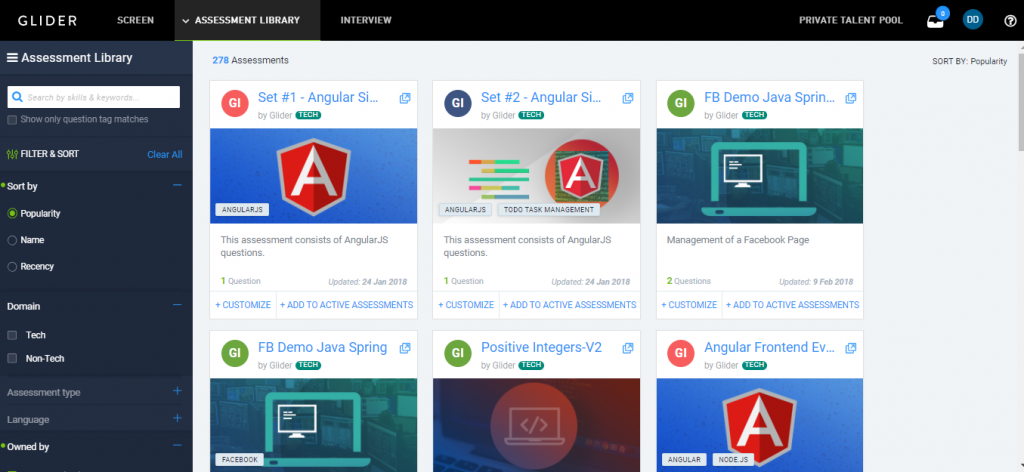
Video interviews help in easing the candidate selection process and provide accessible evaluation data to provide a well-rounded profile of the applicant. They allow the candidate as well as the interviewer to interact with each other in real-time.
The purpose of video interviews is to provide remotely accessible personal interviews in a scalable manner.
Glider lets you conduct one-way video interviews as well as two-way video interviews. You can watch candidates’ recorded answers at your own time or conduct a remote two-way interview.

Remote hiring tools help overcome geographical and timezone constraints. Glider provides a range of products that help in making your recruitment process more efficient and better productive.
As a recruiter, you should consider these important tips before digitizing the recruiting process. remote hiring tools empower you to create a structured hiring process that is competency-based and efficient.
It may be the candidates’ skills, personality, behavior, or technical prowess, our remote hiring tools help you to analyze everyone in the talent pool thoroughly and effectively.
Create a standardized recruitment process with Glider. Arrange a meeting with us.

“The Perfect Candidate Just Hacked Us”: Inside the Global Playbook of Hiring Fraud That 100% test score might be your biggest red flag. Enterprise breaches don’t always start with phishing emails; sometimes, they start with a fake job interview. In this episode of Talented, Joseph Cole sits down with COO Ben Walker to unpack one […]

Can HR Stop Playing Buzzword Bingo with Skills and AI? If you’re an HR or TA practitioner or work in HR Tech in any capacity, AI and Skills-Based Hiring is what everyone is talking about. The problem? All the talk is diluting the importance of two very interrelated topics. Glider AI sponsored the Transformation Realness […]
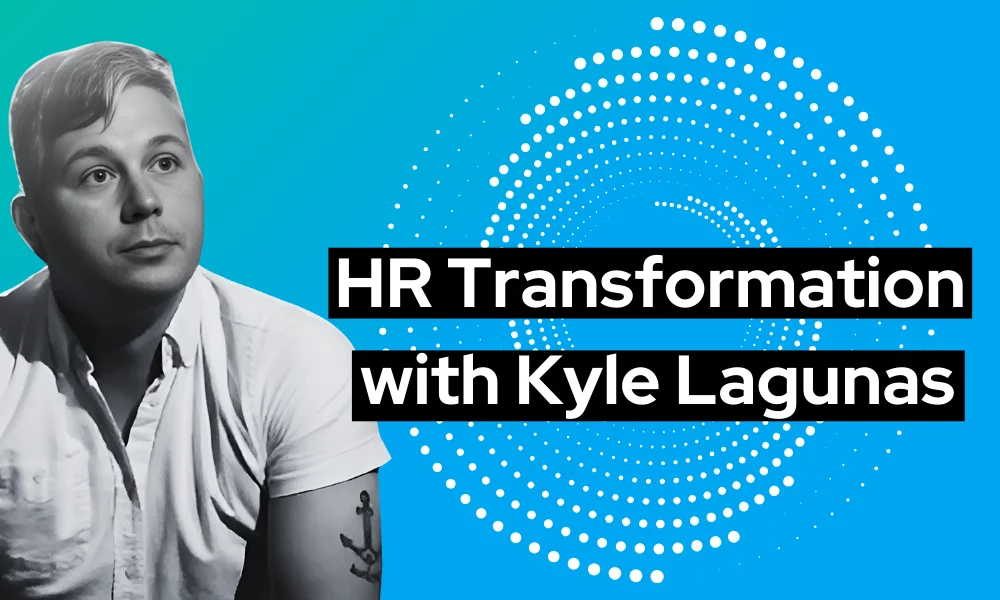
Q&A with HR/TA Analyst Kyle Lagunas The traditional playbook that was HR is being rewritten. AI is reshaping work, skills-based strategies are transforming hiring, and HR teams are under pressure to deliver more with less. HR isn’t just about managing people anymore—it’s about engineering the future of work. In this Q&A session, Kyle Lagunas and Joseph […]